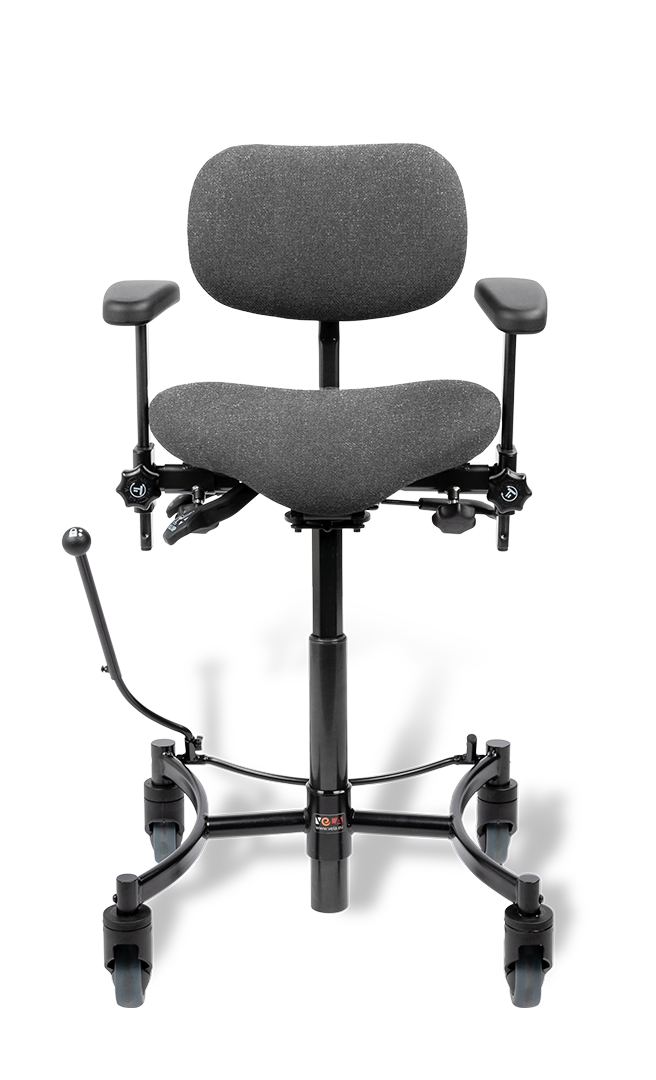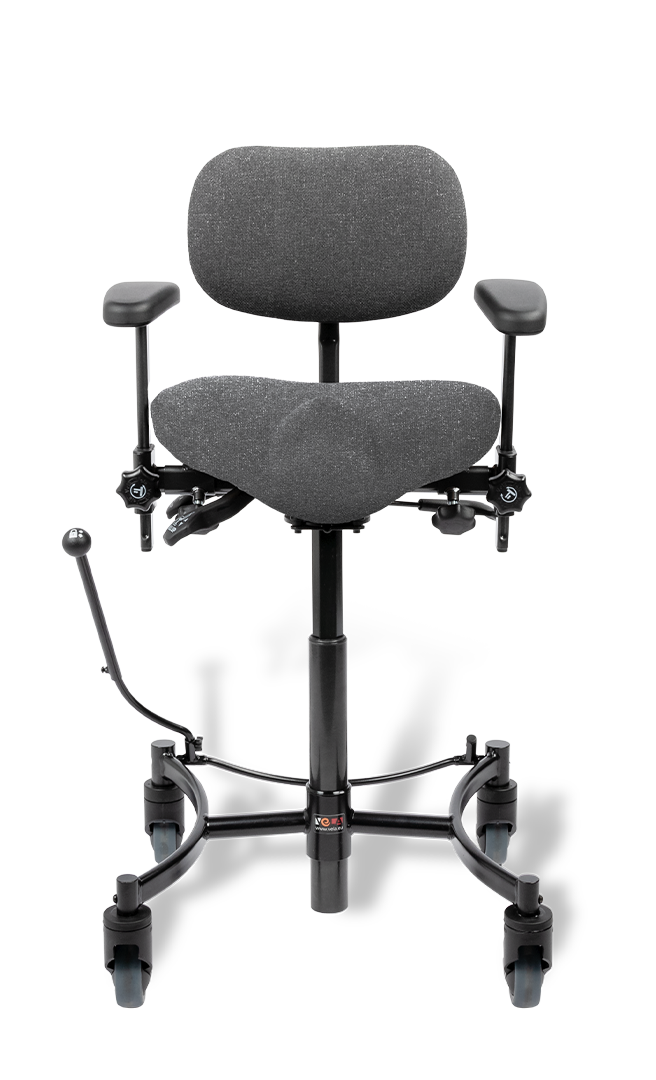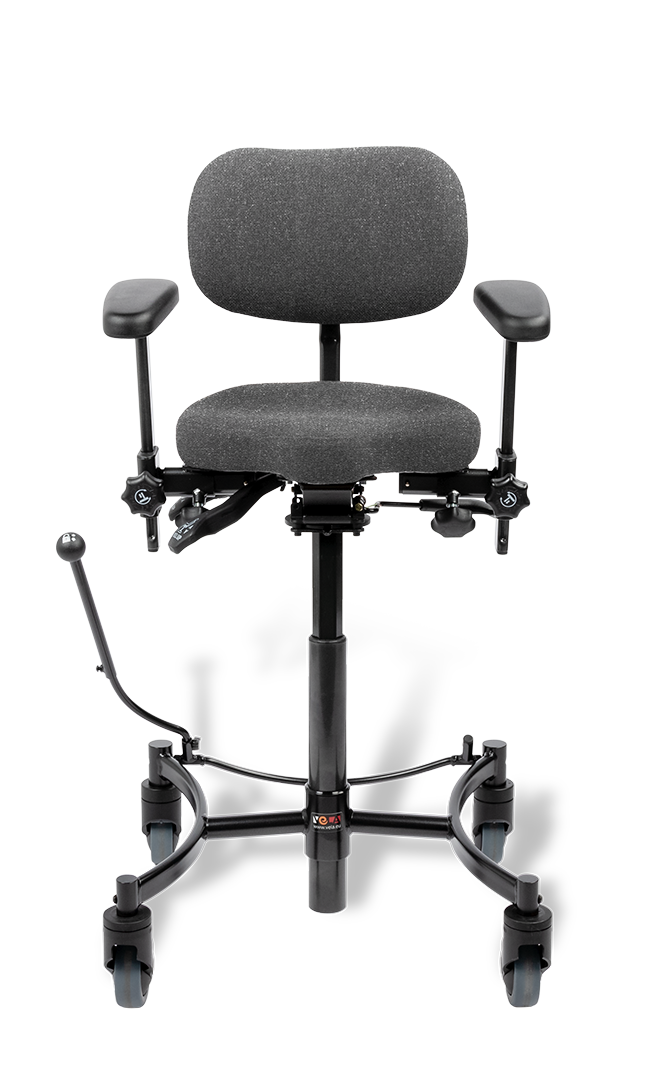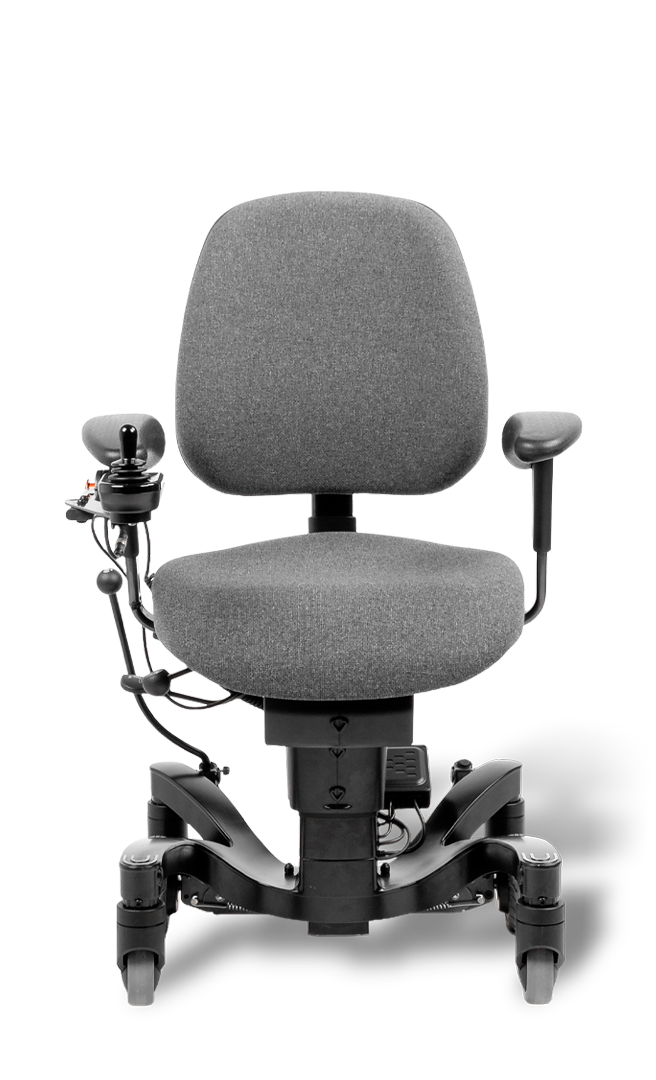Disability in the workplace: Cæcilie’s story
- 4. August 2025
- Reading time: 7 min.
Table of Contents
Working with a disability
Are you one of the many people navigating the workday with a disability?
Being an employee with a disability – or working alongside a colleague who has one – often comes with unique challenges, especially when routine tasks become more demanding.
Whether the difficulties are due to joint and muscle pain or problems with balance, having a disability at work can make everyday life more complicated. But with the right equipment and the proper support, it’s entirely possible to thrive in the workplace.
Cæcilie is an excellent example of that.
About CP
- Cerebral palsy (CP) is a lifelong condition that primarily affects movement and coordination.
- It is the most common cause of physical disability among children and young people in Denmark.1
- Each year, between 110 and 130 babies are born with CP in Denmark, and around 10,000 Danes live with the condition.¹ Globally, an estimated 17 million people have CP.2
- CP is caused by damage to, or abnormal development of, the cerebral cortex – the outer layer of the brain. This damage may occur during pregnancy, during birth, or in early childhood. Common causes include premature birth, bleeding, strokes, lack of oxygen, or infections. However, in many cases, the cause is unknown.3
- Although CP itself does not worsen over time, symptoms may change or become more noticeable as a child grows. Symptoms usually appear within the first two to three years of life.3
- CP can cause a wide range of symptoms, including problems with muscle control, coordination, muscle tone, reflexes, posture, and balance. It may also be associated with difficulties related to vision, hearing, speech, learning, epilepsy, and cognition. Over time, muscle imbalances can lead to joint and skeletal deformities.4
How a VELA chair supports workplace inclusion
Cæcilie first encountered a VELA chair in 1993 when she was in her first year of school. She explains that, for this reason, it felt completely natural to choose a VELA chair again as an adult.
However, it wasn’t until she was signed off work due to her health that the VELA chair truly became a vital part of her daily life. With increasing difficulty moving about, she thought: “I need something that doesn’t move.”
So she asked the local authority if they could provide a VELA work chair to help her return to work despite her disability.
She received the chair, and after five months of sick leave, she was ready to return to her job part-time.
Today, Cæcilie works in a flex job as an administrative employee in an office, where she continues to use a VELA chair adapted to her needs. She especially appreciates the fact that it’s identical to the chair she uses at home.
According to Cæcilie, the chair supports her in several key ways:
It has a brake function that provides stability when sitting down or standing up
The seat includes an abduction block, which helps keep her legs in a stable and functional position
She can adjust the seat and backrest sizes for optimal comfort and support
Cæcilie always uses her VELA chair at work – even when attending meetings in other rooms. She knows that sitting on a standard chair for an extended period can be uncomfortable and drain her energy.
Her story is a powerful reminder that employees with disabilities can contribute fully in the workplace – as long as they receive the right support.
Do you or a colleague need everyday support?
Our VELA dealers have many years of experience helping people with disabilities find the right chair.
They take the time to listen, ask the right questions, and identify a solution that suits both individual needs and the working environment.
Find your VELA dealer here



